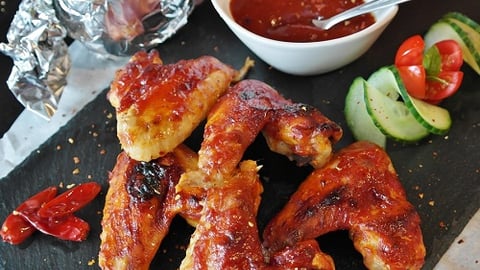Restaurant Technology in the Post-COVID-19 World
As the industry and the world suffers through the first month of a systemic business and economic shutdown, it paints a harsh reality of not only what impact a pandemic can cause on our national and world economy, but also a glimpse of what the world is going to look like when we emerge from this. Those who believe that business will resume under the same rules and rituals from before COVID-19 are not reading the social and emotional cues that have taken place over the last few weeks. It will be the operator that recognizes that we are emerging into a different operational and technology landscape that will stand the greatest opportunity to rebound and daresay thrive in the new world of personal safety and social behavior.
Customer-Facing Restaurant Technology
Payment Solutions
One of the most obvious changes that will need to occur, or in many cases accelerate, is in the world of payment solutions. Our conventional payment models of cash and plastic credit cards are a petri dish of germs and potentially contagious agents. According to factmonster.com, a $1 bill is in circulation for 18 months; $5 bill, two years; $10 bill, three years; $20 bill, four years; and $50 and $100 bills, nine years. The number of hands that this currency will go through during the life of the currency presents a clear concern in the minds of a new germ-conscious consumer who emerging from the COVID-19 crisis will be better informed and educated about contagion. Additionally, it has been shared that germs (or a virus) can remain active on a piece of plastic for upwards of 72 hours; within that period of time the average consumer could easily conduct a half-dozen to a dozen transactions in today’s typical operation where the card is handed to the cashier for payment.
The new awareness and concern over contagion will be a major driver for existing technologies to be fully implemented; this includes EMV, contactless, tap and pay, and mobile wallets. In each of these cases, there is no person-to-person transfer and the chance of passing any germs is greatly mitigated. All of these technologies have existed in the restaurant industry for years, and for the most part have been slowly and often begrudgingly adopted. Moving forward in the Post-COVID-19 (P-C19) world, this will be table stakes and no longer considered a “nice to have.” Organizations that do not embrace and promote a contactless payment environment will find themselves suddenly behind the operations-technology curve.
Delivery & Customer Pickup
We can anticipate that moving forward customers will be much more concerned about the food safety (discussed below) as well as the “labor chain” within the restaurant as it relates to all forms of food delivery but increasingly around delivery and customer pickup. When food is consumed in the restaurant, it is likely to go straight from the kitchen onto a plate and given to the guest within a short period of time to the guest. There are few people in the labor-chain. When it comes to delivery and guest pickup, the food is prepared, transferred to packaging, bagged, and then stored in a location somewhere in the restaurant for either a driver to pick up or the customer to do so. While a restaurant cannot necessarily control the 3rd party delivery driver, restaurants may look to deploy some form of locker system that maintains the food at a proper temperature until the time of pickup and that can track, secure, and record who picked up the food and the time of pickup. The ability to track and ensure that the food was within established temperature and storage parameters will help restaurants ensure top quality and minimize potential foodborne issues.
Fine Dining & Table Service Menus
It has been clearly established that germs can exist on plastic surfaces for several days, and the newly educated customer base will be sensitive to the notion of being handed a menu that could easily be cycled a dozen or so times during this period. Restaurants should look to providing an option for a guest to pull up the menu on their own device as well as look to leverage digital menu board technology wherever possible. In some cases this may mean an alteration in the current serving model or perhaps new hardware to be developed that allows a server to bring a large digital menu to a table for ordering, but the intention is to avoid another concern that P-C19 customer will certainly have.
Did you know that you're reading one of HT's 'Top 5 Most Read' articles? Want all 5 sent directly to your inbox? Then click here.
Employee-Facing Restaurant Technology
Not all safety concerns directly impact the customer; in fact, there are an equal number of concerns that will need to be addressed in order for employees to feel safe in returning to their jobs. It should be understood that P-C19 employees will expect – daresay demand – a higher level of protection and assurance of safety measures to allow them to get their minds off health concerns and back to providing excellent service to returning customers.
Daily Health Checks (Temperature)
It is not outside the realm of possibility that employers (at least in the early days after the regulations are lifted) will do a quick health check for their employees as they return to work. Much like the airports and hospitals are performing today, we might expect employers to provide masks for nervous employees as well as checking temperatures as employees are clocking in. It would be an interesting capability should timeclocks have the ability to take a temperature either through some biometric means as part of the clocking in process, with the ability to alert the manager should anyone clock in with a high temperature.
Anti-Microbial POS Screens and other device surfaces
Employees interact on a regular basis with POS hardware and other types of technology during the normal course of their business day. Many of these surfaces are plastic and allow germs to survive on them for an extended period of time. Surfaces like a POS touchscreen, a KDS expeditor, or a biometric thumb scanner can be used by dozens of people on any given day. It will be important for employers to look at solutions, such as anti-microbial POS screens, as well as improved cleaning habits, in order to avoid passing germs as well as to set their employees at ease. This may also be the kick-in-the-pants that the technologists need to further refine and perfect the voice ordering capabilities in order to virtually eliminate the need to use a POS touchscreen altogether. We have long spoken about the promise and potential of this technology only to see it expand rapidly in our personal lives with Google and Amazon and yet be almost non-existent in our commercial operations. Now would be a good time to step up development and implementation of this technology.
Checklists & Alerting
Employees have the right – and interestingly enough also the responsibility – to work in a safe environment. Until now we have looked at that more from a “wet floor, hot stove” perspective and not necessarily one free from germs on surfaces and contagion from fellow employees. As the risk and threats have evolved, so too should the technology or how it is used. While many operators have deployed automated checklist functionality, it will be necessary to re-work the actual tasks to ensure that new cleanliness and monitoring standards are reflected on the list of items to be performed. Additionally, we should probably be looking at adding key sanitation items to our inventory for ordering such as sanitary wipes, hand sanitizer, latex gloves, and perhaps others. In the event that these tasks are not completed on a pre-set periodic basis (which is also likely to become more frequent) then the manager needs to be immediately informed in order to ensure that the work is completed.
Part 2: Restaurant Business Model Changes in a Post COVID-19 World
About the Author:
Toby W. Malbec is Managing Director of ConStrata Technology Consulting. He can be reached at TMalbec (at) ConStratatech.com.





